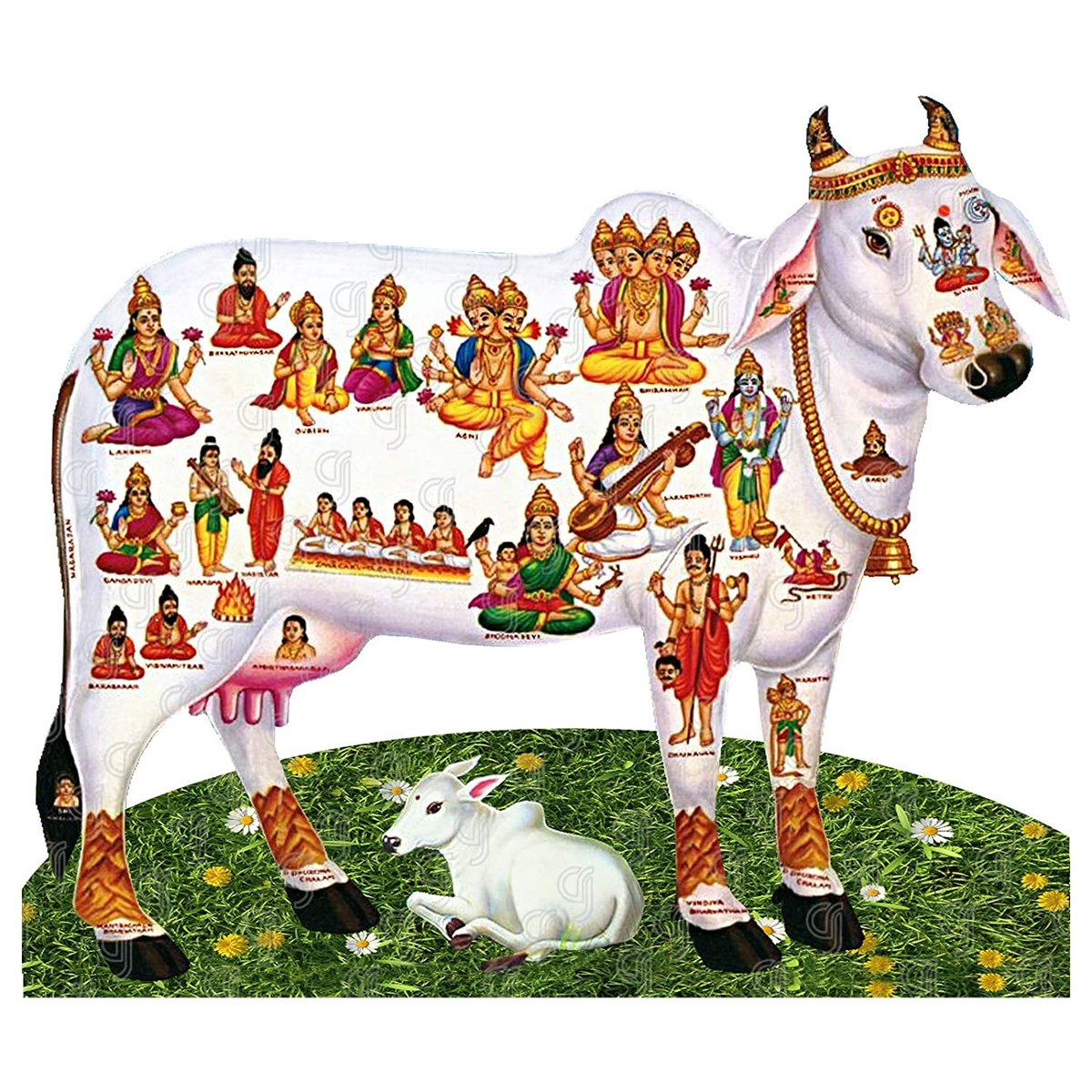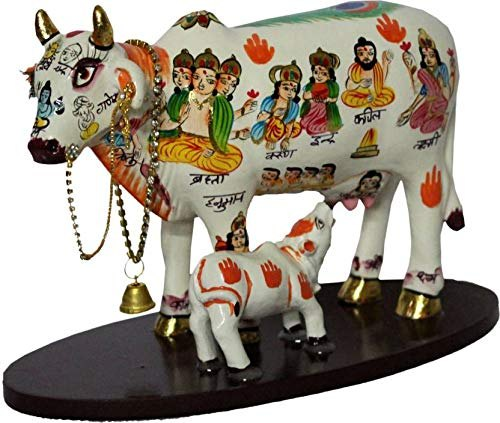Uruguay & India ❓ Thread
त्वं माता सर्व देवानां त्वं च यज्ञस्य कारणम् ।
त्वं तीर्थ सर्वतीर्थानां नमस्तेस्तु सदानधे ।
O Destroyer of sins! You are the mother of all Deities. You are the reason for Yagnya. Among all Tirthas, you are the holiest. I pay my obeisance to you.
त्वं माता सर्व देवानां त्वं च यज्ञस्य कारणम् ।
त्वं तीर्थ सर्वतीर्थानां नमस्तेस्तु सदानधे ।
O Destroyer of sins! You are the mother of all Deities. You are the reason for Yagnya. Among all Tirthas, you are the holiest. I pay my obeisance to you.

′ Uruguay ′′ is a country with an average of four cows per person and is the world's leading agricultural country. There are only 33 lakh people in the country, and 1 crore 20 lakh cows. 

Every cow's ear is fitted with an electronic chip. They keep an eye on whoever is in charge of which cow is at which location. Where one farmer sits inside the machine and harvests the crop, the other enters the information on the screen to see what the crop data is. 

In 2005, a country of 33 lakh people produced enough food for 90 lakh people; today, it produces enough grain for 2 crore 80 lakh people. The success of ′′ Uruguay ′′ is the result of decades of research by country farmers and animal parents. 

500 agricultural engineers have been engaged to oversee the entire farming process, and these individuals use drones and satellites to keep a watch on farmers to ensure that they follow the same farming approach that has been set. 

With several times greater grain production than people, all grains, milk, yoghurt, ghee, and butter are comfortably exported, and every farmer earns millions. A man's minimum monthly income is $125,000, or $190,00 per year. 

′′The sun is the national emblem of this country, while the cow and horse are the national symbols of progress. ′′ Uruguay has an immediate execution law for cow slaughter. 

Slay the Cow slaughterers. – Atharvavēda 1-16-4
यदि नो गां हमि यद्यश्वं यदि पूरुषम् ।
तं त्वा सीसेन विध्यामो यथा नोऽसो अवीरहा ॥
Meaning : If someone destroys our cows, horses or people, kill him with a bullet of lead.
यदि नो गां हमि यद्यश्वं यदि पूरुषम् ।
तं त्वा सीसेन विध्यामो यथा नोऽसो अवीरहा ॥
Meaning : If someone destroys our cows, horses or people, kill him with a bullet of lead.
Salutations, to this cow-loving nation. The imp thing to remember is that all of these cows are Indians. Indian cow is a term used to describe a someone who is well-versed in Indian culture. 

The awful part is that cow slaughter occurs in India, and cow slaughter is punishable by death in Uruguay. Is there anything we can learn from Uruguay's farmer nation?
Panchagavya is an extremely pure medicine.
गव्यं पवित्रं च रसायनं च पथ्यं च हृद्यं बलबुद्धिकृत् स्यात् ।
आयुःप्रदं रक्तविकारहारी त्रिदोषहृद्रोगविषापहं स्यात् ॥
गव्यं पवित्रं च रसायनं च पथ्यं च हृद्यं बलबुद्धिकृत् स्यात् ।
आयुःप्रदं रक्तविकारहारी त्रिदोषहृद्रोगविषापहं स्यात् ॥

Panchagavya is an extremely pure chemical. It is healthy when included in diet, gives joy to the heart, increases life span, strength and intellectual capability. It is the destroyer of the three doshās (The three defects as per Āyurveda). 

It also destroys all the impurities and disorders of blood. It can cure cardiac disorders. By consuming it, all physical, mental and psychological problems can be overcome.
Due to consumption of Panchagavya, one becomes free from all the sins related to body, is able to have control over mind and becomes eligible for acquiring knowledge. 

1. Gomay: It absorbs the heat.
2. Gomutra : It has healing power.
3. Milk: It is easy to digest as a result it is used as a substitute for mother’s milk. It is not fattening.
4. Yoghurt: It destroys Vat. It increases strength.
5. Ghee: It is useful for eyes and on wounds.
2. Gomutra : It has healing power.
3. Milk: It is easy to digest as a result it is used as a substitute for mother’s milk. It is not fattening.
4. Yoghurt: It destroys Vat. It increases strength.
5. Ghee: It is useful for eyes and on wounds.
As per the Atharvaveda, 33 crore Deities reside inside the cow. While describing the Divine form of cow, Bhagawan Sri Krishṇa has said,
‘धनूनामस्मि कामधुक’
🙏🙏🙏
Share & RT
‘धनूनामस्मि कामधुक’
🙏🙏🙏
Share & RT

@sbk1963 @nair_hena08 @AjitsinhJagirda @keerani
@neerangautam @shytigress @LevinaNeythiri
@IndianRajeshNCo @chimnibai @ShefVaidya @_ankahi @SoniaGurnani19 @Ravichiruvolu1 @ArunDeshpande20
@JaganNKaushik @GenPanwar @SortedEagle @myogiadityanath @narendramodi
@neerangautam @shytigress @LevinaNeythiri
@IndianRajeshNCo @chimnibai @ShefVaidya @_ankahi @SoniaGurnani19 @Ravichiruvolu1 @ArunDeshpande20
@JaganNKaushik @GenPanwar @SortedEagle @myogiadityanath @narendramodi
• • •
Missing some Tweet in this thread? You can try to
force a refresh













